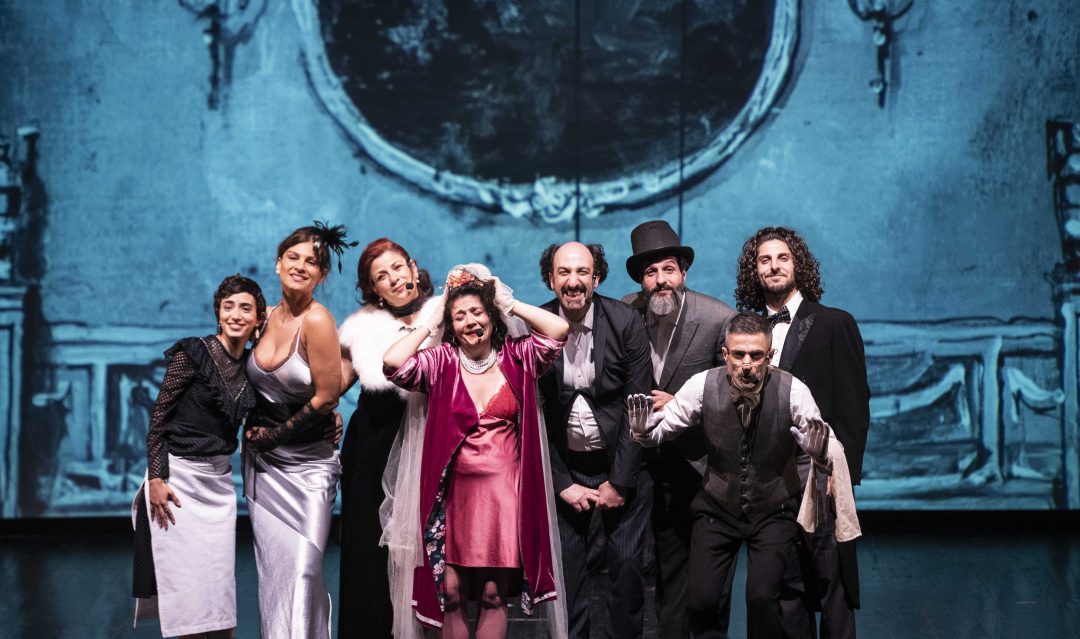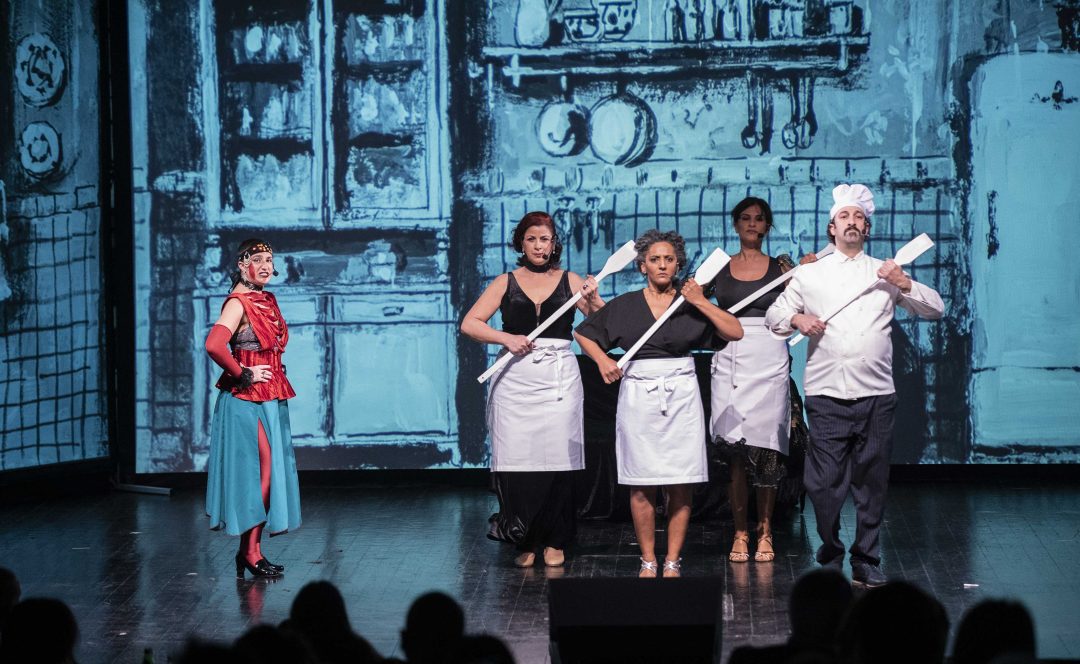Listen to the article
Al Souq Al Oumoumi is a theatrical production written and directed by Hisham Jaber that vividly recreates the brothel district of 1960s Beirut. The play, which premiered on January 13, continues to run every Thursday at Metro Al Madina.
Al Souq Al Oumoumi show oscillates between reality and fiction, narrating the stories of the most infamous madams of Beirut’s downtown red-light district during the pre-war era. “A simple, ordinary street, with buildings and houses… brothel houses.” The locals believed this street, named Al-Mutanabbi Street, was intended to shield local families from indecency.
With twelve years of experience in this theatrical genre, director Hisham Jaber shared insights into the concept of the show: “Revisiting archives was crucial for us. Since there were scant documents available, we endeavored to construct narratives and draw parallels between the history of this market and the city itself. We conducted numerous interviews with former workers and clients. Our primary source was a report by Dr. Samir Khalaf, an anthropologist who wrote about the souk in the 1960s after interviewing a hundred women who worked there. This study was intended for students at AUB. It is noteworthy that a similar market existed in Tripoli but was shut down in the 1960s.”
Addressing the balance between reality and fiction, he noted, “It was imperative for us to authentically represent the era through costumes, textiles, and colors. Yasmina Fayed’s creation of costumes and wardrobes played a pivotal role in the process. Music also significantly helped in reviving the souk as it was originally conceived, with Mediterranean tunes infused with jazz and blues. The story is factual, yet wrapped in fiction since we did not want to create a documentary. On stage, there are six musicians, eight actresses, and four actors, each cast specifically for their roles. We considered what each actor could bring to their character. We also believe in the liberating power of theater, whether through physical movement or speech.”
He added, “We spent four years writing and rewriting the play before it premiered. I set melodies to the words and then worked on the music with Makram Aboul Hosn. Khouloud Yassine served as the choreographer for the project. The stunning visual tableaux owe much to Elie Rizkallah, and the visual animations to Nadim Saoma. Finally, after 30 to 40 rehearsals, we successfully recreated the vibrant atmosphere of the souk from that era, and we are pleased to contribute to the artistic dynamism in Beirut.”
Joseph Azoury, an actor and musician in the production, discussed his dual role: “If you had asked me six or seven years ago, I would have definitely said theater, but now that I have grasped the musical language and how to express myself in this form just as one does in theater — through words and body — I have discovered the wonder and curiosity of a child eager to learn more about this form of expression. Currently, I would say I am between both theater and music. What is fascinating for me in this piece is that we are simultaneously actors, singers, and dancers, and we work in harmony, the actors and musicians together on stage. I also hope that my work in music over the past six years might culminate in a concert.”
He continued, “My role in Al Souq Al Oumoumi is not limited to one but to five. We are all versatile in this performance. We start with the stories of the girls, then move to the street, and onto the story of the city, Beirut. My favorite character I portray is the waiter at Kahwet El-Ezez, who narrates the daily lives of these girls, set against a musical backdrop spanning from the 1920s to the 1960s. An unparalleled experience to witness.”




